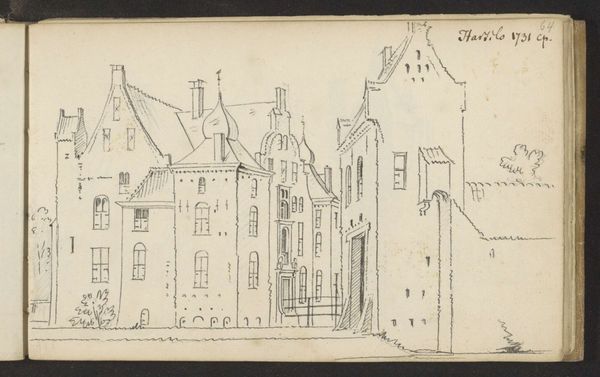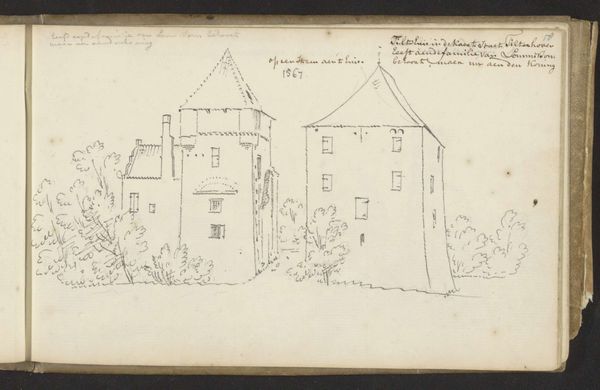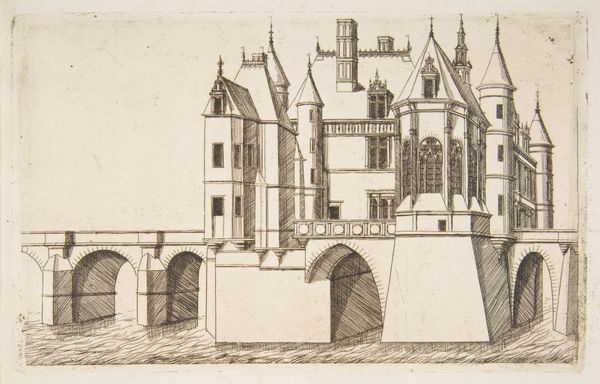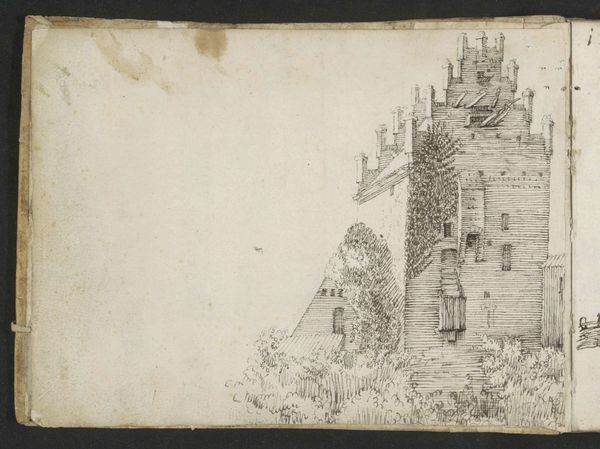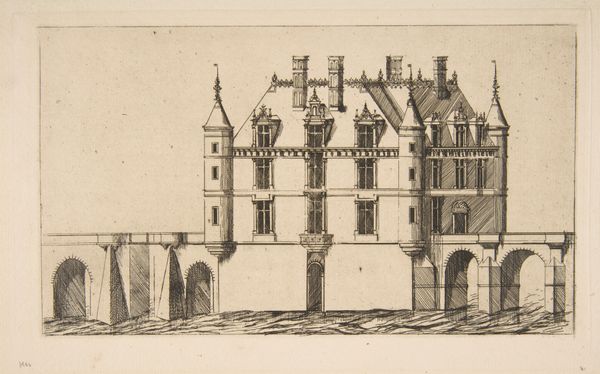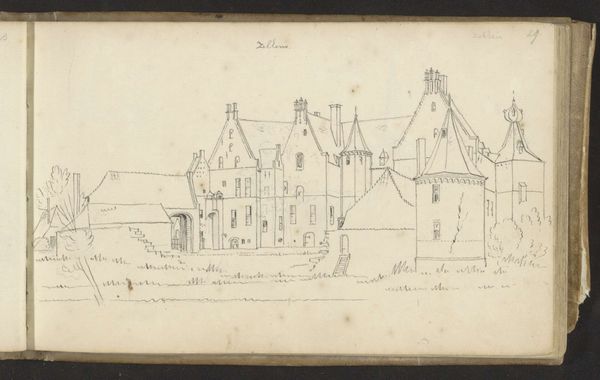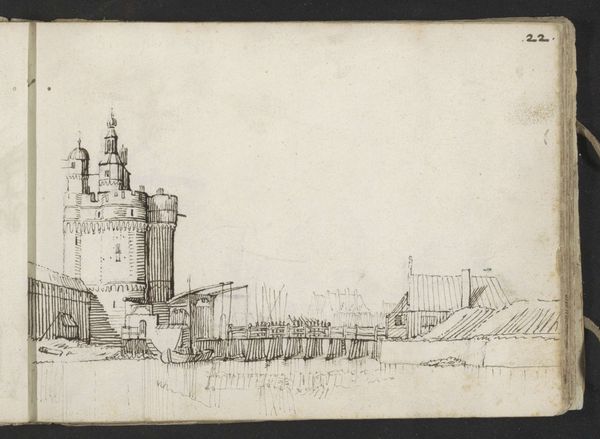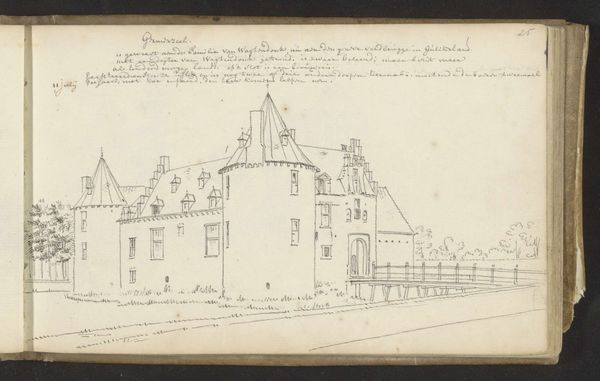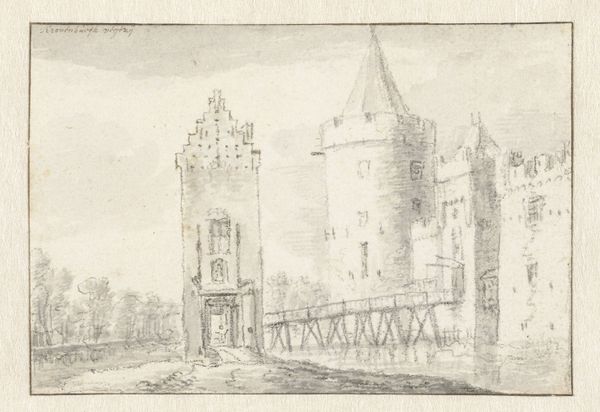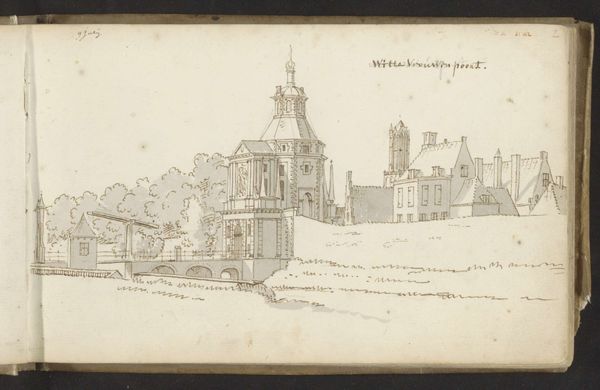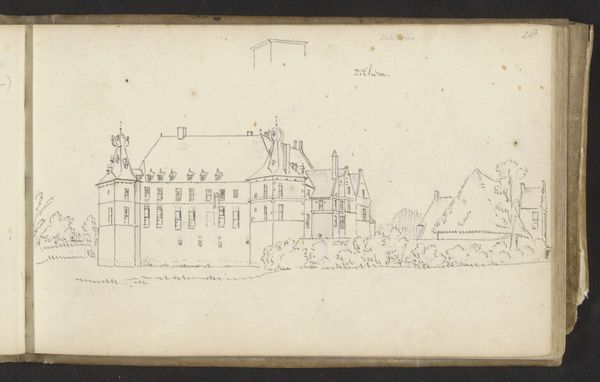
drawing, paper, ink, pen, architecture
#
drawing
#
aged paper
#
quirky sketch
#
dutch-golden-age
#
sketch book
#
landscape
#
paper
#
personal sketchbook
#
ink
#
sketchwork
#
pen-ink sketch
#
line
#
pen work
#
sketchbook drawing
#
pen
#
cityscape
#
storyboard and sketchbook work
#
sketchbook art
#
architecture
#
realism
Copyright: Rijks Museum: Open Domain
This is Gerard ter Borch's sketch of the Kamperpoort in Zwolle. Its architecture presents itself as a potent symbol of fortification and passage. The gate, a liminal space, is neither entirely inside nor outside, but a point of transition and control. Note the towers and the heavy wooden gate: such structures are not merely architectural; they evoke a sense of security but also hint at potential conflict. The gate's presence resonates with similar motifs across epochs – from ancient Roman city gates to medieval castle entrances. Each iteration carries the weight of its historical context, yet the core symbolism persists. Consider how the archway, a recurring motif in art and architecture, has evolved. Initially a structural necessity, it soon became a symbol of triumph, such as in Roman triumphal arches, or a sacred passage, as seen in religious buildings. The Kamperpoort, with its own imposing arch, taps into this deep-seated understanding. It invites us to contemplate the psychological impact of entering and exiting protected spaces, a primal concern that continues to shape our environments and our emotional responses to them.
Comments
No comments
Be the first to comment and join the conversation on the ultimate creative platform.
